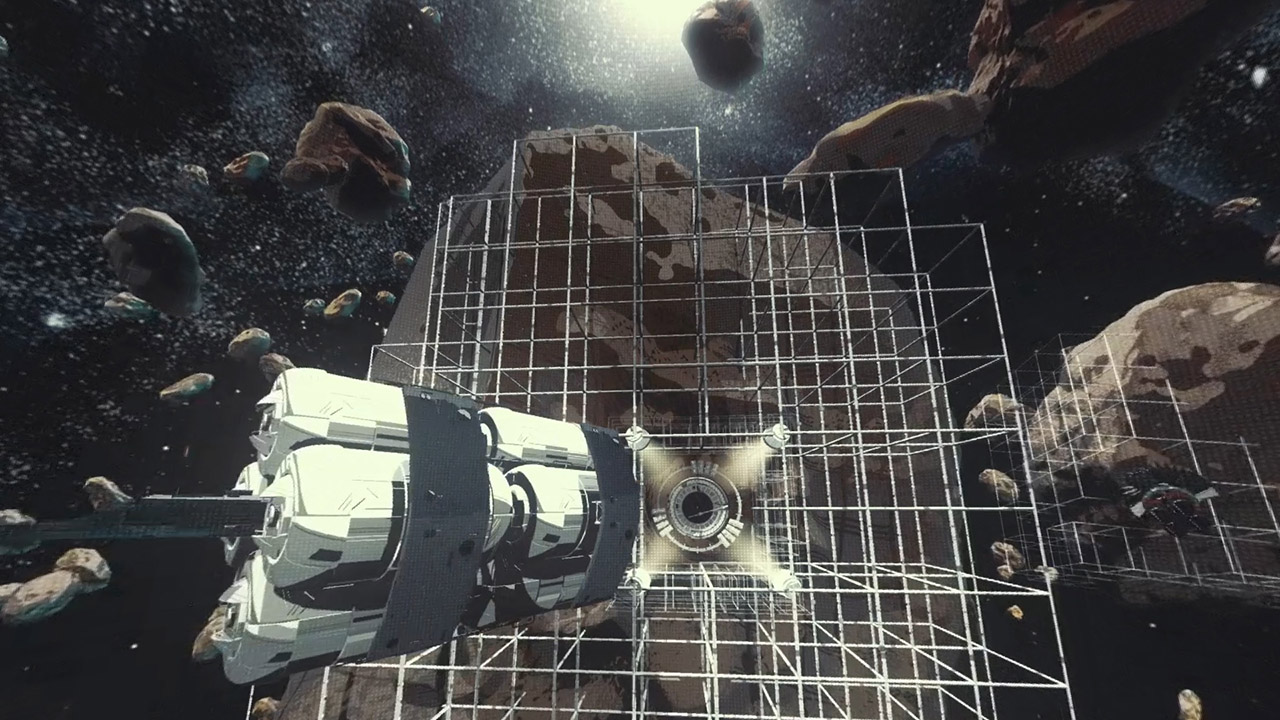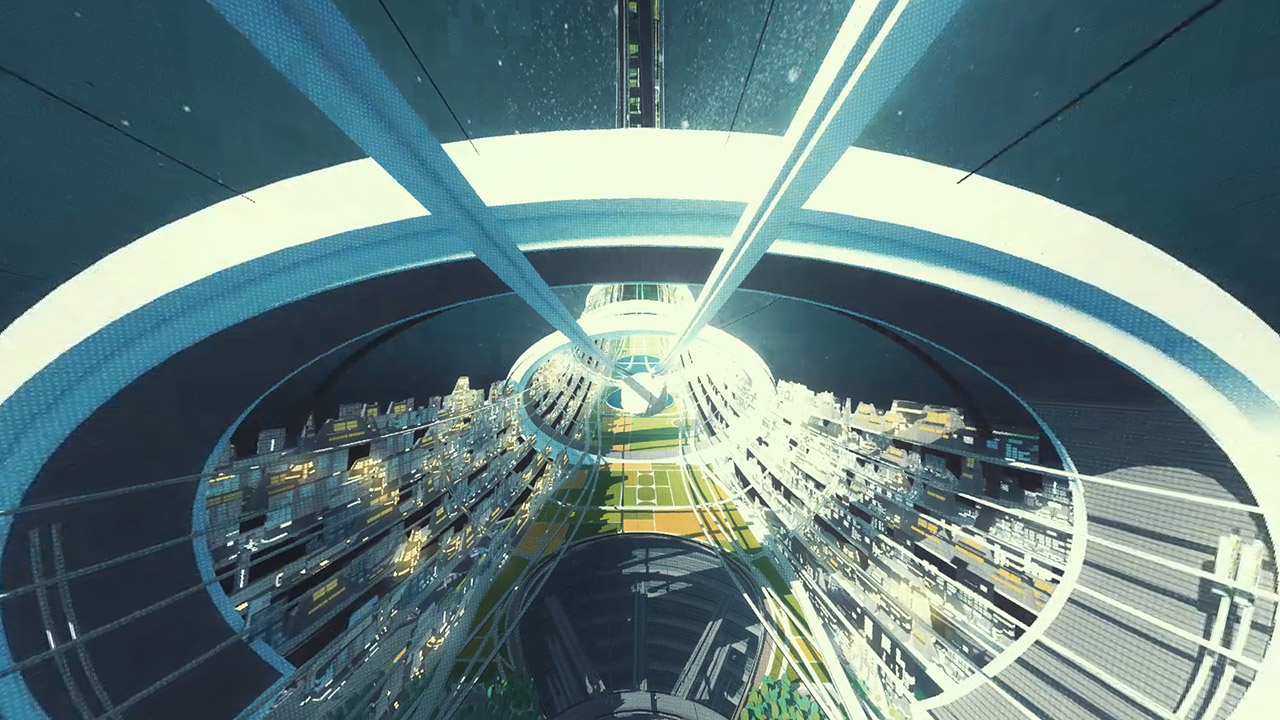_Beyond Earth
To commemorate the 50th anniversary of the moon landing, in partnership with Land Rover, CNN VR created an animated journey across time and space to explore what is next for humans in space. From space tourism to Martian colonies, we fix the imagination on tomorrow's moonshots.
_The Process
_Planning

_Reference

_Final Stills




Because our message is aimed specifically at the future, we decided to utilize cutting-edge techniques. The simulated environment of Virtual Reality allows us to engage in experiential storytelling not just as a two-dimensional dramatization, but as a fully constructed world. Just as today’s scientists predict the future with a blend of creativity and theory, we immerse the viewer in a contrived reality, rooted in scientific research.
To underscore this uniquely American achievement, we transport the viewer both backward and forward in time. The video begins with the original moon landing itself, before launching out of a 1969 American middle class living room and into the near future, journeying outwards in both distance and time from there.
To create the most accurate representation of this historic moment, we consulted with historical documents, archival photos, and video footage. These sources helped anchor our depiction of lighting, shadows, color, texture, interior design, clothing, and pop culture artwork both on the moon and within the home. To build precise scientific visuals for this piece, we consulted with experts from NASA’s Jet Propulsion Lab. Our video’s positioning of the sun and earth in the sky from the lunar surface, for example, matched the astronomical record exactly to the moment of the Apollo 11 moon landing. The details of the space suit designs, for instance, were verified by multiple sources for both historical and near-future representations.
Building out the potential for human expansion into space required a great deal of detail to be fleshed out, to bring everything to life. Futuristic screen interfaces, vehicle designs, and architectural forms had to be crafted with intention. We considered issues of utility, scale, and practicality, while anticipating physical and technological boundaries that society has not yet faced.
On a technical level, many considerations were taken to balance logistical feasibility with the creative needs of the piece. Everything was built in 3D with Cinema 4D and OctaneRender. The density of the 3D geometry of each scene was enormous: creating entire space stations to scale required extensive use of proxy files and multipass scene set-ups. To maintain a warmer and impressionistic visual tone, we made heavy use of manual hand illustration, organic textures, and 3D toon shading techniques. Additionally, we used motion capture data to drive all of our character animation, further bringing to life what otherwise could have been a stark, cold, and robotic experience. Everything was ultimately composited and processed through Adobe After Effects: layering in atmospherics, lighting effects, and final color grading to give each scene its own emotional character.
All of this attention to fidelity and detail was to more deeply immerse the viewer into a physical space that does not yet exist. Building in VR enabled us to both transport back to a seminal moment in human history, while also launching forward into the possibilities ahead, as we mark this point in our journey along the way.
cnn.com/2019/06/22/us/apollo-11-moon-mars-scn
Art Director: Padraic Driscoll
Animators: Padraic Driscoll, Shane Csontos-Popko, Jeff Hsu, Justin Weiss, Kelly Flynn, Craig Waxman, Roberto Chriqui, Hyewon Lee
Digital Artists: Ken Fowler, Leah Abucayan, Melody Shih, Sandy Pan
Executive Producer: Jason Farkas
Producer: Bronte Lord
Executive Creative Director: Jonathan Reyes
Sound Designers: Bronte Lord, Carla Howe
Researcher: Elizabeth Roberts
Music: Boards of Canada - 1969
To underscore this uniquely American achievement, we transport the viewer both backward and forward in time. The video begins with the original moon landing itself, before launching out of a 1969 American middle class living room and into the near future, journeying outwards in both distance and time from there.
To create the most accurate representation of this historic moment, we consulted with historical documents, archival photos, and video footage. These sources helped anchor our depiction of lighting, shadows, color, texture, interior design, clothing, and pop culture artwork both on the moon and within the home. To build precise scientific visuals for this piece, we consulted with experts from NASA’s Jet Propulsion Lab. Our video’s positioning of the sun and earth in the sky from the lunar surface, for example, matched the astronomical record exactly to the moment of the Apollo 11 moon landing. The details of the space suit designs, for instance, were verified by multiple sources for both historical and near-future representations.
Building out the potential for human expansion into space required a great deal of detail to be fleshed out, to bring everything to life. Futuristic screen interfaces, vehicle designs, and architectural forms had to be crafted with intention. We considered issues of utility, scale, and practicality, while anticipating physical and technological boundaries that society has not yet faced.
On a technical level, many considerations were taken to balance logistical feasibility with the creative needs of the piece. Everything was built in 3D with Cinema 4D and OctaneRender. The density of the 3D geometry of each scene was enormous: creating entire space stations to scale required extensive use of proxy files and multipass scene set-ups. To maintain a warmer and impressionistic visual tone, we made heavy use of manual hand illustration, organic textures, and 3D toon shading techniques. Additionally, we used motion capture data to drive all of our character animation, further bringing to life what otherwise could have been a stark, cold, and robotic experience. Everything was ultimately composited and processed through Adobe After Effects: layering in atmospherics, lighting effects, and final color grading to give each scene its own emotional character.
All of this attention to fidelity and detail was to more deeply immerse the viewer into a physical space that does not yet exist. Building in VR enabled us to both transport back to a seminal moment in human history, while also launching forward into the possibilities ahead, as we mark this point in our journey along the way.
cnn.com/2019/06/22/us/apollo-11-moon-mars-scn
Art Director: Padraic Driscoll
Animators: Padraic Driscoll, Shane Csontos-Popko, Jeff Hsu, Justin Weiss, Kelly Flynn, Craig Waxman, Roberto Chriqui, Hyewon Lee
Digital Artists: Ken Fowler, Leah Abucayan, Melody Shih, Sandy Pan
Executive Producer: Jason Farkas
Producer: Bronte Lord
Executive Creative Director: Jonathan Reyes
Sound Designers: Bronte Lord, Carla Howe
Researcher: Elizabeth Roberts
Music: Boards of Canada - 1969
